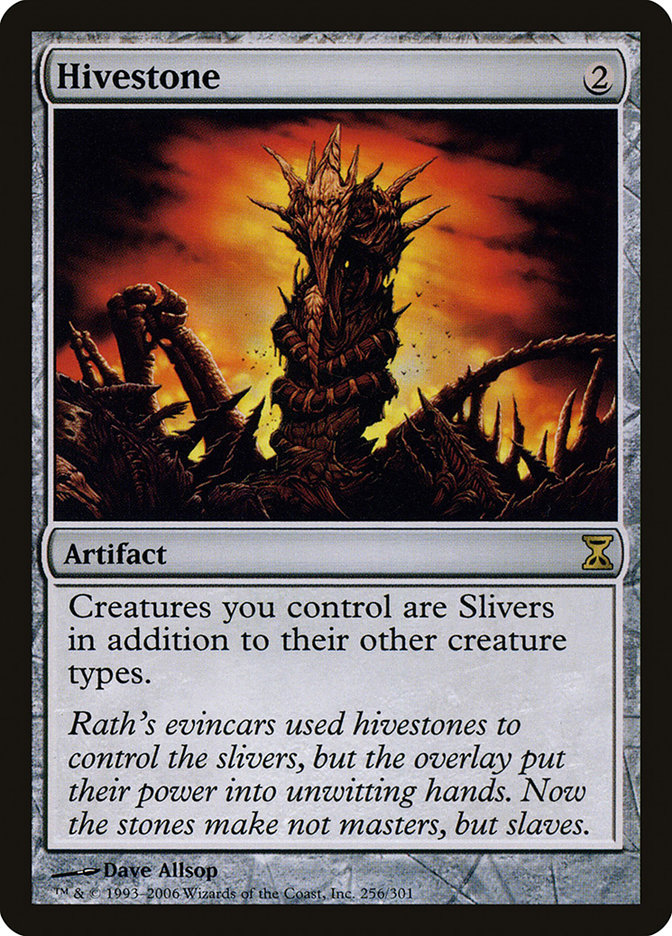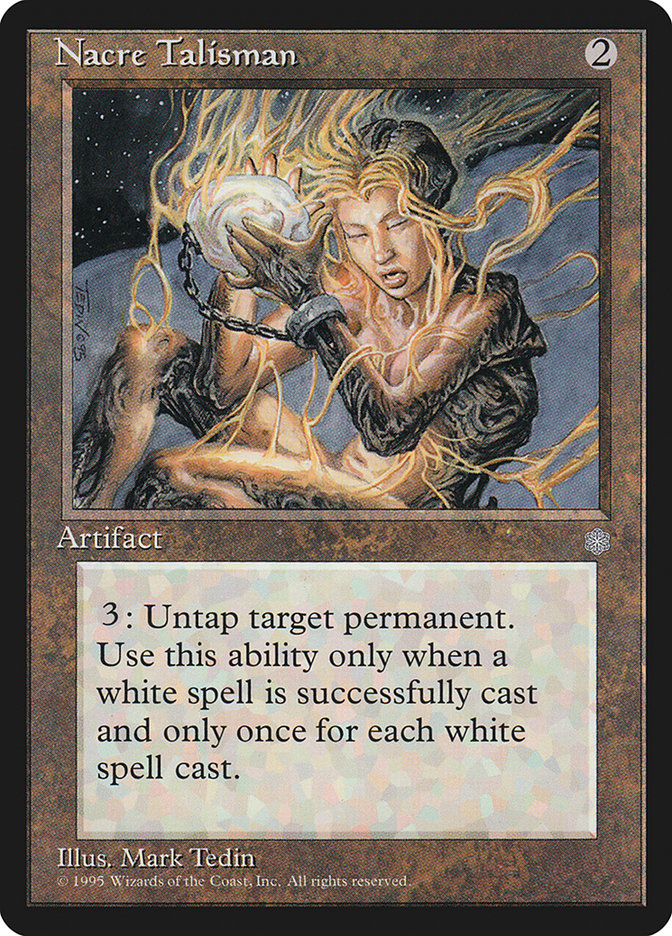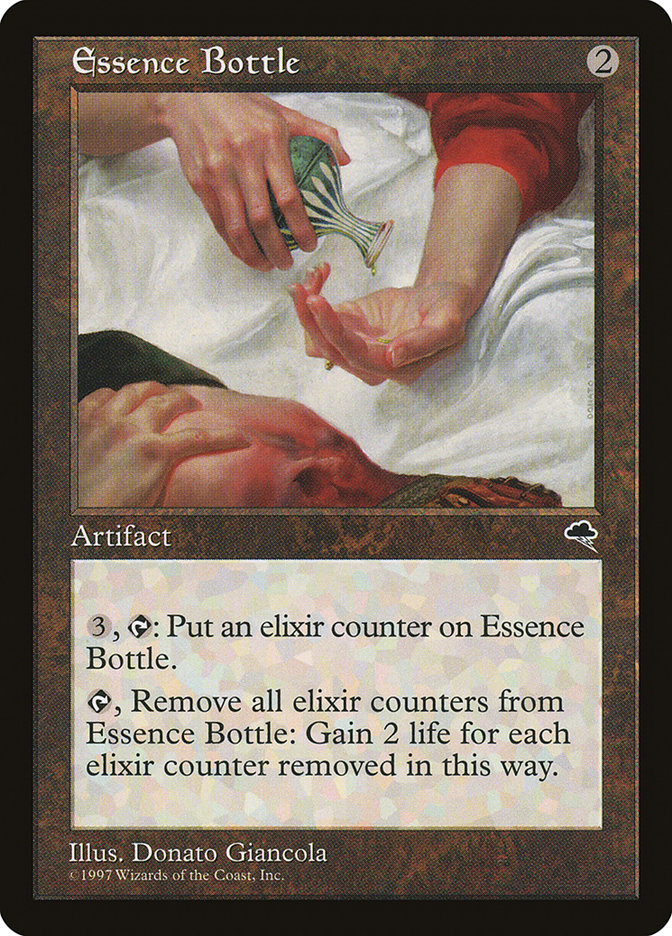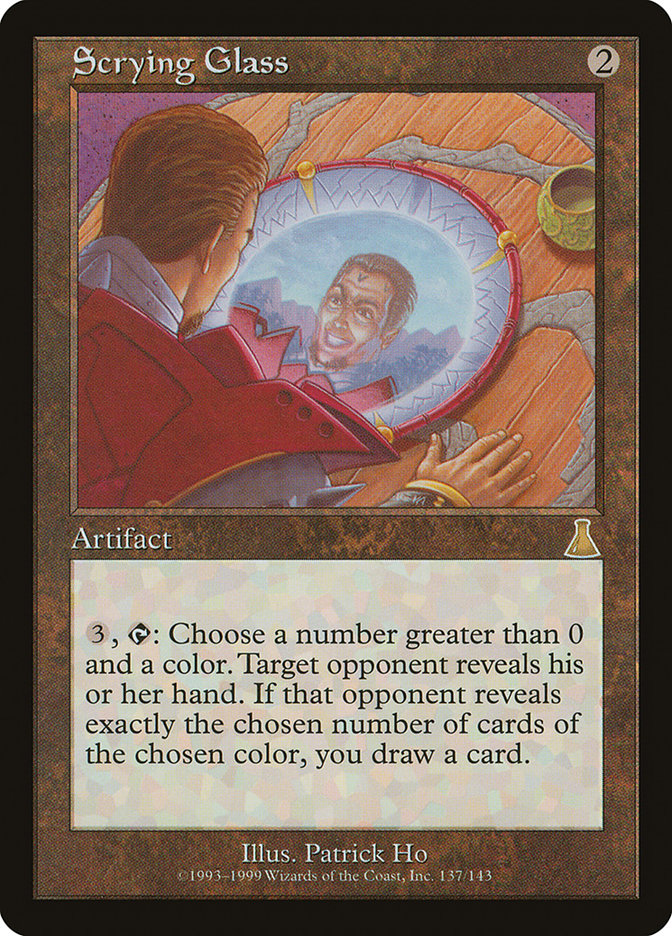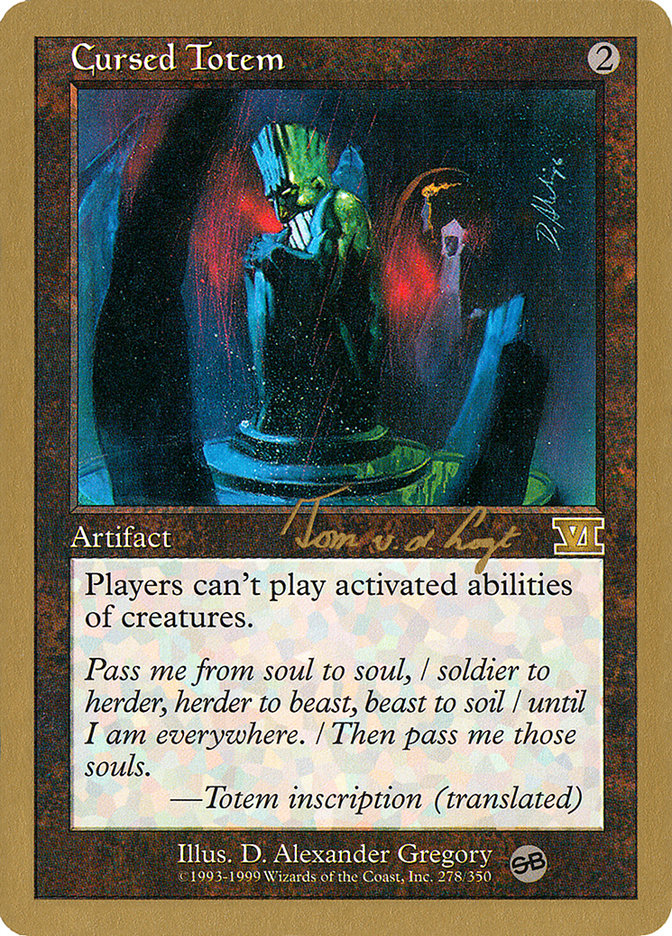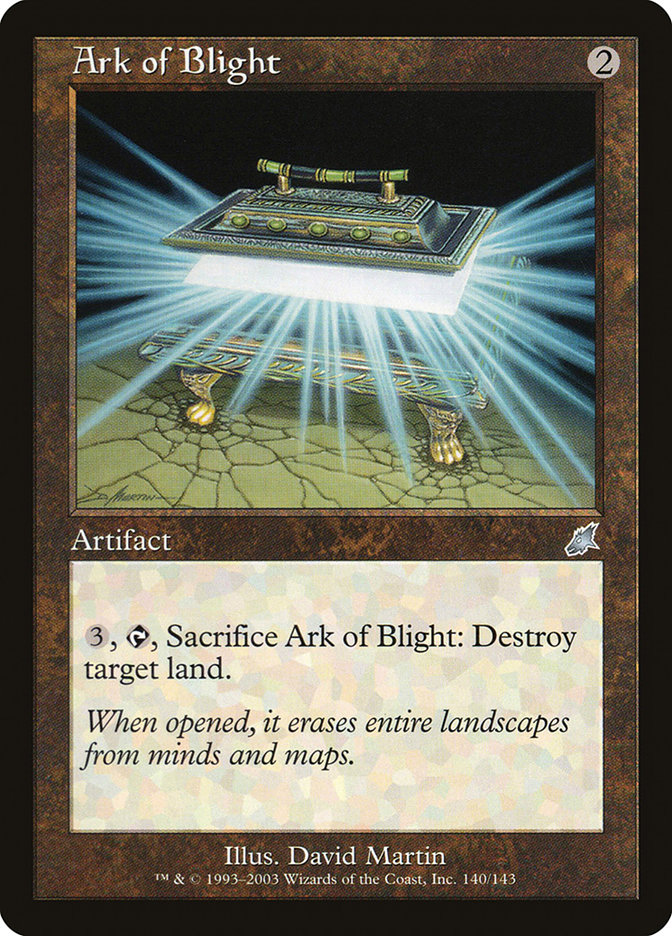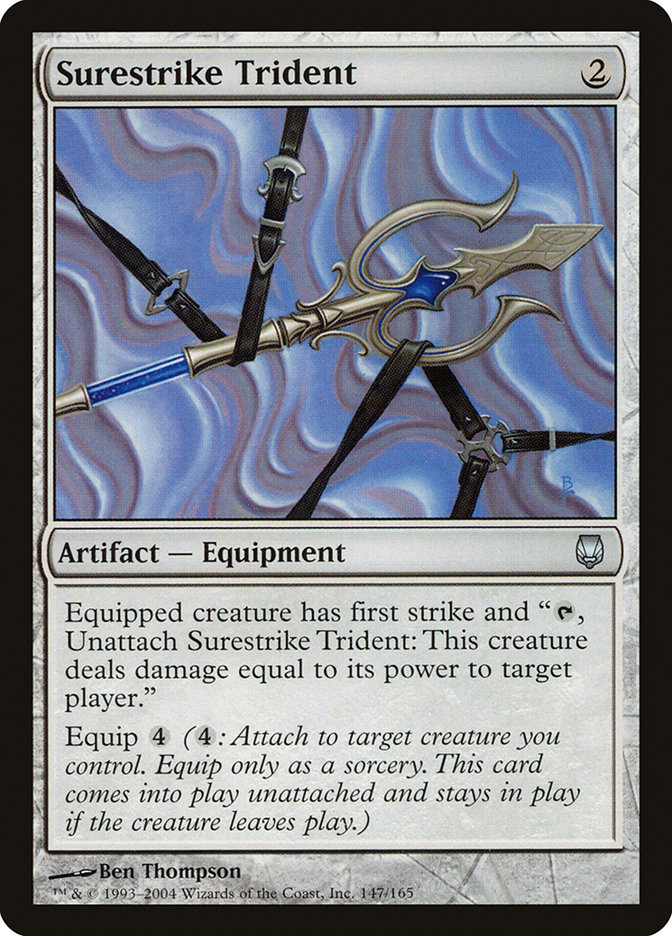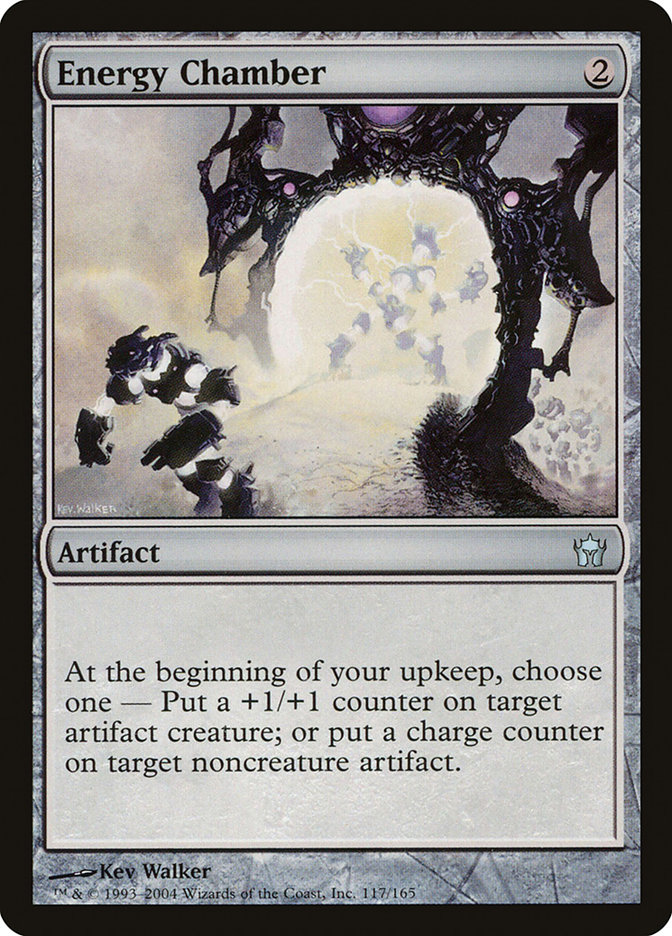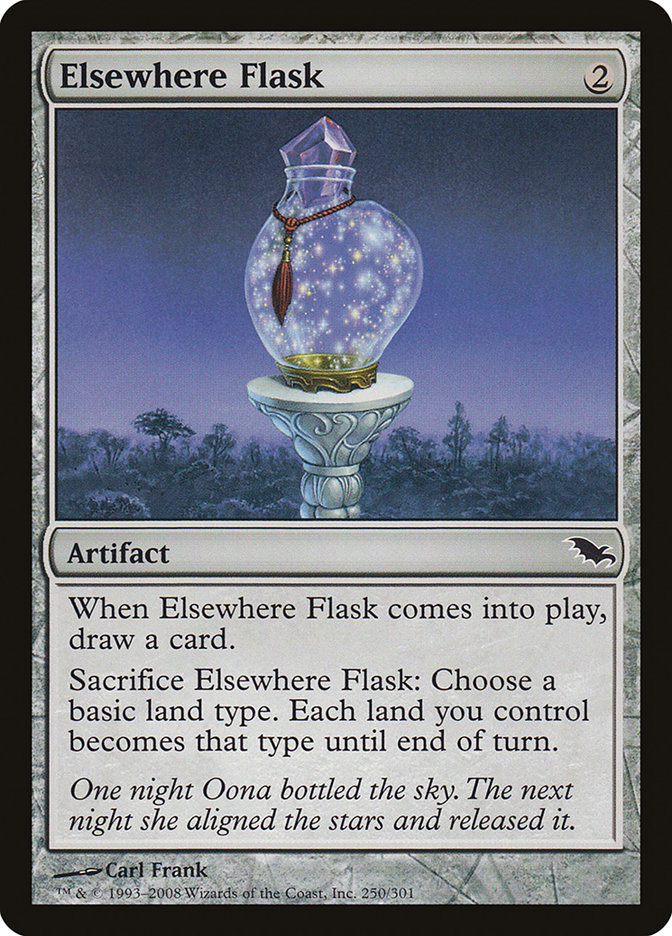Hivestone MTG Card
| Card sets | Released in 2 setsSee all |
| Mana cost | |
| Converted mana cost | 2 |
| Rarity | Rare |
| Type | Artifact |
Text of card
Creatures you control are Slivers in addition to their other creature types.
Rath's evincars used hivestones to control the slivers, but the overlay put their power into unwitting hands. Now the stones make not masters, but slaves.
Cards like Hivestone
Within the realm of Magic: The Gathering, Hivestone occupies a unique space by transforming creatures without a tribe into Slivers. Its closest counterpart in terms of tribal manipulation is Conspiracy. Conspiracy allows you to choose a creature type and turn all your creatures into the chosen type, similar to Hivestone’s effect but at a broader scale and with the flexibility of choice.
Another card that resonates with Hivestone’s theme is Arcane Adaptation. Like Conspiracy, it permits players to select a creature type and all creatures they control, and creature cards they own that aren’t on the battlefield, become the chosen type. Unlike Hivestone, it affects cards in your hand, graveyard, and library as well. Lastly, Xenograft shares a comparable function, enabling creatures you control to become a chosen type and thus offering a consistent tribal synergy, though it doesn’t change a creature’s inherent type.
While Hivestone’s specificity to Slivers might seem like a limitation, it is actually a strength in Sliver decks, seamlessly integrating with the creatures’ natural synergies. These comparisons highlight Hivestone as a pivotal piece in Sliver-based strategies, showcasing its ability to unify creatures under one of the most synergistic tribes in Magic: The Gathering.
Cards similar to Hivestone by color, type and mana cost
Card Pros
Card Advantage: Hivestone’s unique trait enables your creatures to share creature types, aligning with tribal synergies that can lead to considerable card advantage. This asset becomes pivotal when drawing or tutoring creatures that thrive on those shared types, reinforcing your board presence with every play.
Resource Acceleration: The ability to turn all your creatures into a single type creates a unified front that accelerates resources. This unity can be particularly beneficial in decks that reward you for controlling multiple creatures of the same kind, providing an opportunity to maximize your mana investment and speed up your gameplay.
Instant Speed: While Hivestone itself doesn’t operate at instant speed, its continuous effect lets you instantly adapt to dynamic in-game scenarios as they unfold. Each creature you deploy benefits immediately from the Hivestone, allowing seamless integration into your strategy without missing a beat.
Card Cons
Discard Requirement: The Hivestone card itself has no discard mechanic but it might force specific deckbuilding choices where discard comes into play—particularly in sliver decks that favor this tactic.
Specific Mana Cost: Hivestone requires a colorless mana to cast, which makes it versatile across multiple decks. However, its sliver-synergy nature may limit its usage to sliver-centric builds that require a diverse mana base.
Comparatively High Mana Cost: With a casting and activation cost that totals to three mana, Hivestone may come across as a sizable investment for an effect that doesn’t immediately impact the board state, unlike other artifacts in the same cost bracket.
Reasons to Include Hivestone in Your Collection
Versatility: Hivestone offers a unique adaptability to any deck by allowing players to transform all creatures into Slivers, potentially unlocking new synergies and interactions that can shape the tide of the game.
Combo Potential: With Hivestone, the door opens to numerous combo possibilities. By turning your creatures into Slivers, you can take advantage of the shared abilities commonly associated with Sliver decks, giving rise to a multitude of powerful combinations and play patterns.
Meta-Relevance: In an ever-changing MTG landscape, Hivestone maintains relevance, particularly when creature-based strategies are predominant. By converting creatures to Slivers, players can cleverly respond to the meta, allowing for unexpected and dynamic plays that could disrupt common strategies.
How to beat
Hivestone is a unique artifact in Magic the Gathering, and its ability to turn all creatures into Slivers can be a double-edged sword. To effectively counter this card, players need strategies that disrupt the synergy it provides. One approach is using removal spells to target key Sliver creatures that grant powerful abilities, thereby weakening the collective strength of the opponent’s creatures. Alternatively, players can employ board wipes to clear the entire field of Slivers, nullifying Hivestone’s effect entirely.
Another tactic is to take advantage of the fact that Hivestone does not change creature types to Sliver in any zone other than the battlefield. This means graveyard-based and hand-disruption strategies can prevent Sliver synergies before they happen. Lastly, cards that restrict the types of creatures that can attack or block can be particularly effective against a Hivestone-driven deck, as they can specifically bar Slivers from combat, dampening the Hivestone’s tactical advantage.
In essence, the key to overcoming Hivestone lies in recognizing and targeting its potential to generate overwhelming board presence with Slivers and using this understanding to strategically dismantle that presence before it becomes insurmountable.
Where to buy
If you're looking to purchase Hivestone MTG card by a specific set like Time Spiral and Time Spiral Remastered, there are several reliable options to consider. One of the primary sources is your local game store, where you can often find booster packs, individual cards, and preconstructed decks from current and some past sets. They often offer the added benefit of a community where you can trade with other players.
For a broader inventory, particularly of older sets, online marketplaces like TCGPlayer, Card Kingdom and Card Market offer extensive selections and allow you to search for cards from specific sets. Larger e-commerce platforms like eBay and Amazon also have listings from various sellers, which can be a good place to look for sealed product and rare finds.
Additionally, Magic’s official site often has a store locator and retailer lists for finding Wizards of the Coast licensed products. Remember to check for authenticity and the condition of the cards when purchasing, especially from individual sellers on larger marketplaces.
Below is a list of some store websites where you can buy the Hivestone and other MTG cards:
 BUY NOW
BUY NOW BurnMana is an official partner of TCGPlayer
- eBay
- Card Kingdom
- Card Market
- Star City Games
- CoolStuffInc
- MTG Mint Card
- Hareruya
- Troll and Toad
- ABU Games
- Card Hoarder Magic Online
- MTGO Traders Magic Online
See MTG Products
Printings
The Hivestone Magic the Gathering card was released in 2 different sets between 2006-10-06 and 2021-03-19. Illustrated by Dave Allsop.
| # | Released | Name | Code | Symbol | Number | Frame | Layout | Border | Artist |
|---|---|---|---|---|---|---|---|---|---|
| 1 | 2006-10-06 | Time Spiral | TSP | 256 | 2003 | Normal | Black | Dave Allsop | |
| 2 | 2021-03-19 | Time Spiral Remastered | TSR | 268 | 2015 | Normal | Black | Dave Allsop |
Legalities
Magic the Gathering formats where Hivestone has restrictions
| Format | Legality |
|---|---|
| Commander | Legal |
| Legacy | Legal |
| Modern | Legal |
| Oathbreaker | Legal |
| Vintage | Legal |
| Duel | Legal |
| Predh | Legal |
| Penny | Legal |
Rules and information
The reference guide for Magic: The Gathering Hivestone card rulings provides official rulings, any errata issued, as well as a record of all the functional modifications that have occurred.
| Date | Text |
|---|---|
| 2021-03-19 | Hivestone doesn’t affect creature spells or creature cards anywhere other than the battlefield. |
| 2021-03-19 | Slivers are unaffected by Hivestone; a creature can’t have the same creature type twice. |
